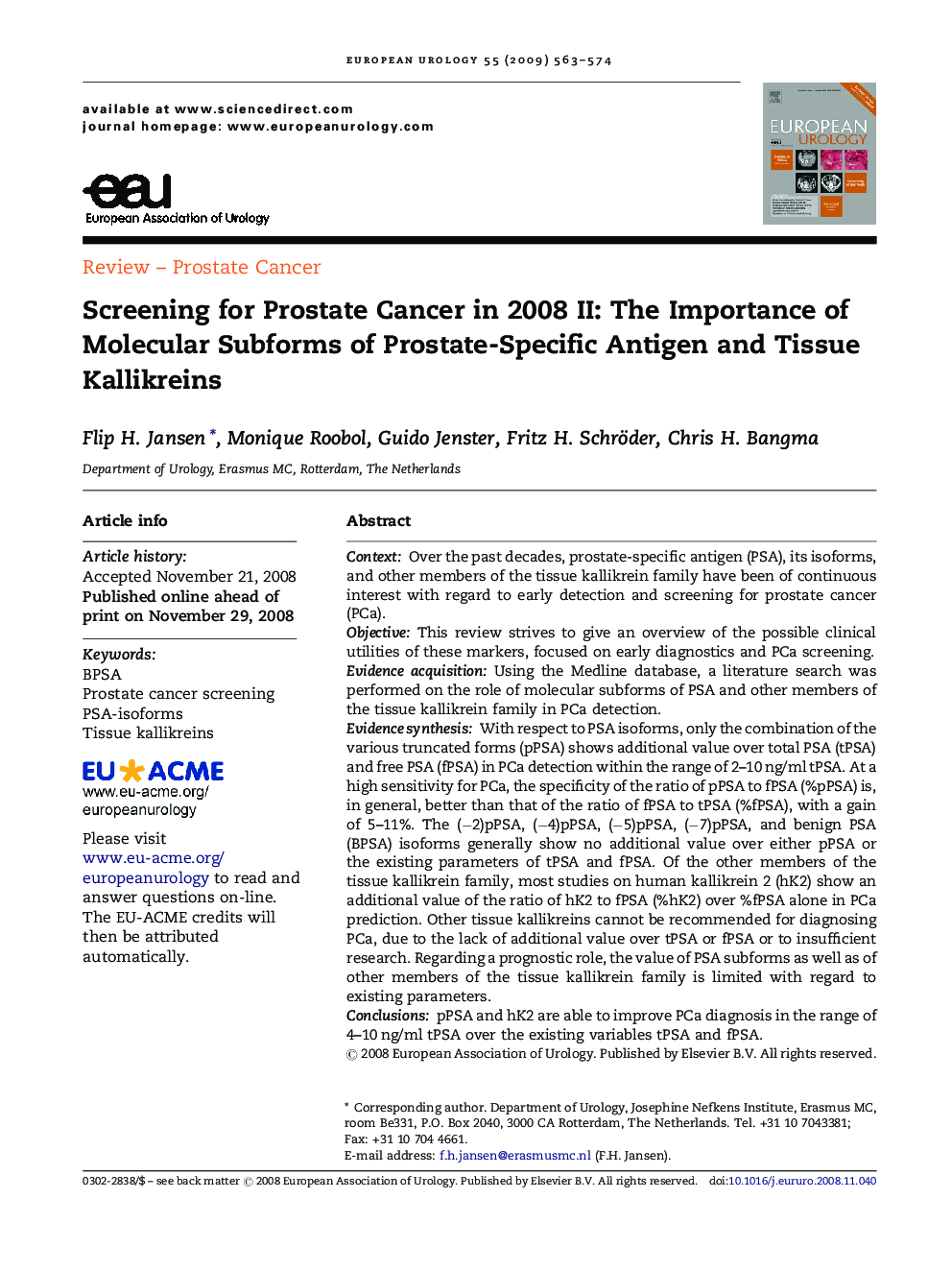| Article ID | Journal | Published Year | Pages | File Type |
|---|---|---|---|---|
| 3924887 | European Urology | 2009 | 12 Pages |
ContextOver the past decades, prostate-specific antigen (PSA), its isoforms, and other members of the tissue kallikrein family have been of continuous interest with regard to early detection and screening for prostate cancer (PCa).ObjectiveThis review strives to give an overview of the possible clinical utilities of these markers, focused on early diagnostics and PCa screening.Evidence acquisitionUsing the Medline database, a literature search was performed on the role of molecular subforms of PSA and other members of the tissue kallikrein family in PCa detection.Evidence synthesisWith respect to PSA isoforms, only the combination of the various truncated forms (pPSA) shows additional value over total PSA (tPSA) and free PSA (fPSA) in PCa detection within the range of 2–10 ng/ml tPSA. At a high sensitivity for PCa, the specificity of the ratio of pPSA to fPSA (%pPSA) is, in general, better than that of the ratio of fPSA to tPSA (%fPSA), with a gain of 5–11%. The (−2)pPSA, (−4)pPSA, (−5)pPSA, (−7)pPSA, and benign PSA (BPSA) isoforms generally show no additional value over either pPSA or the existing parameters of tPSA and fPSA. Of the other members of the tissue kallikrein family, most studies on human kallikrein 2 (hK2) show an additional value of the ratio of hK2 to fPSA (%hK2) over %fPSA alone in PCa prediction. Other tissue kallikreins cannot be recommended for diagnosing PCa, due to the lack of additional value over tPSA or fPSA or to insufficient research. Regarding a prognostic role, the value of PSA subforms as well as of other members of the tissue kallikrein family is limited with regard to existing parameters.ConclusionspPSA and hK2 are able to improve PCa diagnosis in the range of 4–10 ng/ml tPSA over the existing variables tPSA and fPSA.
